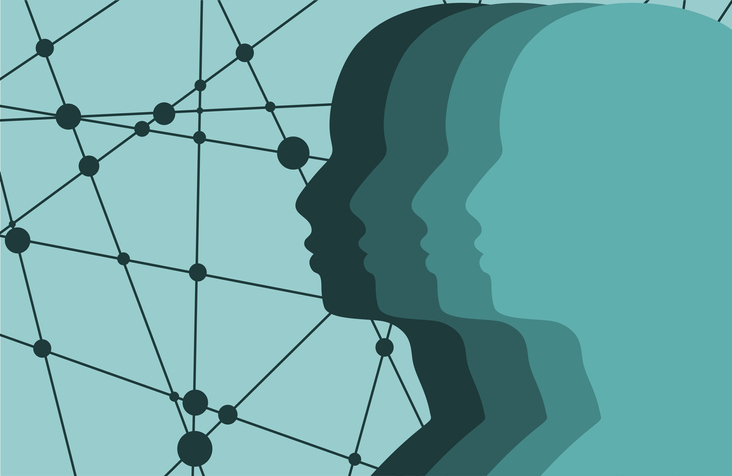
The Covid-19 pandemic has accelerated the conversation surrounding the potential for digital mental health applications to solve gaps in mental health care access—a welcome conversation given the enormous unmet need. But there is still little consensus among industry stakeholders around what constitutes meaningful engagement, which is crucial given that a state of disengagement is such a common part of the experience of those who struggle with their mental health.
With that said, how might we rethink meaningful engagement in digital therapeutics, and what is the relationship between engagement and outcomes? After all, the former should be in service of the latter.

Behavioral Health, Interoperability and eConsent: Meeting the Demands of CMS Final Rule Compliance
In a webinar on April 16 at 1pm ET, Aneesh Chopra will moderate a discussion with executives from DocuSign, Velatura, and behavioral health providers on eConsent, health information exchange and compliance with the CMS Final Rule on interoperability.
A recent report by the WISH 2020 Forum on Mental Health and Digital Technologies has highlighted gamification as one of the most promising tools within the digital mental health industry. This approach has been sweeping across the digital sectors of consumer-facing industries ranging from personal finance to personal wellness.
As a psychologist and a technologist, this emphasis on gamification raised a red flag for me. Should the same tactics that are fueling our online addiction become the standard for driving engagement with solutions that are designed to improve our mental health? When we talk about engagement with mental health care, we cannot center the experience around the bells and whistles of short-term rewards just because we’re speaking in a digital context. While it may well be effective at one level, we still need to consider engagement in the deepest sense: emotional engagement, cognitive and neurological engagement, engagement with oneself, one’s life, and sometimes the dark moments therein. Mental health care, no matter how it’s delivered, needs to be about meaningfully engaging in the real and often hard work of psychotherapy.
Given this, digital mental health solutions must be built to focus less on how to get users to do something, and more on how to meaningfully relate to the user so their mental health improves. Establishing a transparent and mutually-respectful therapeutic relationship with users—a working alliance—can provide them with far more motivation to engage in the therapeutic process than encouraging them to rack up points on a scoreboard.
In the context of human-delivered mental health care, a strong working alliance between therapist and client is considered to be predictive of positive outcomes, and essential to medical care. Unfortunately, the inclusion of a human therapist limits scalability in our stretched health care system. So, the question becomes: can we build a working alliance with patients without a human therapist?

A Deep-dive Into Specialty Pharma
A specialty drug is a class of prescription medications used to treat complex, chronic or rare medical conditions. Although this classification was originally intended to define the treatment of rare, also termed “orphan” diseases, affecting fewer than 200,000 people in the US, more recently, specialty drugs have emerged as the cornerstone of treatment for chronic and complex diseases such as cancer, autoimmune conditions, diabetes, hepatitis C, and HIV/AIDS.
The answer is yes. When leveraged correctly, the convergence of social science, psychology and artificial intelligence allows for the creation of digital mental health solutions that relate to users in a way that simulates the bond created in a successful human therapist-patient relationship. That said, these types of solutions—at this moment in time—are not meant to address every possible mental health condition or replace in-person therapy. They do, however, have the ability to make mental health solutions with therapeutic benefits radically accessible.
Health systems that adopt a stepped care approach focus on providing treatment so that the easiest, lowest intensity, least invasive form of efficacious treatment is delivered first, and the person is offered a higher level of care if they have persistent symptoms. That could mean, for example, using a therapeutic tool and finding resolution in a moment of need may be more effective than 10 days of daily, high-level interactions. And when a digital solution isn’t appropriate, having the ability to quickly graduate people to the proper level of care is essential. In this way, a clear role exists for traditional human-delivered therapy and digitally delivered mental health care within a holistic health care journey, especially where barriers to accessing traditional forms of care exist.
A fundamental change in how we approach designing and bringing to market digital mental health solutions couldn’t be timelier. A December 2020 Kaiser Family Foundation poll revealed that the pandemic has had a “major” impact on the mental health of one in four adults, while New York Times columnist, Farhad Manjoo, calls the global mental health crisis the “hidden fourth wave of the pandemic.” My hope is that our industry will soon recognize just how important it is that digital mental health solutions prioritize building relationships with users. More and more, we have to bring this kind of humanity to technology.
Photo: Evgeny Gromov, Getty Images












